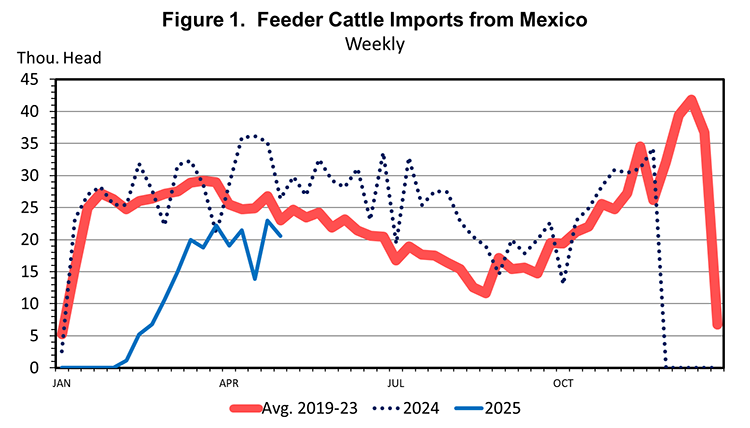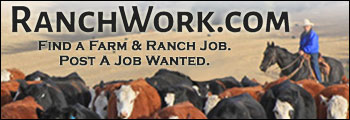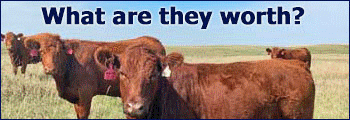Derrell S. Peel, Oklahoma State University
Continued detection of New World Screwworm (NWS) in southern Mexico, farther north than initially, has prompted USDA-APHIS to again close the U.S. border to imports of livestock. The border closed initially last November and reopened in early February after additional protocols and inspections were implemented. Thus far in 2025, a total of 197,844 head of feeder cattle have been imported since the border reopened, down 60 percent year over year for the year-to-date. In 2024, a total of 1.25 million head of feeder cattle were imported, with none in the last five weeks of the year.
USDA-APHIS and Mexican officials will continue to cooperate in monitoring and detection of NWS and in the release of sterile NWS flies, the primary means of controlling the spread of the pest. NWS was eradicated in the U.S. in 1966 and, in cooperation with Mexico, the sterile fly program established a boundary at the southern Mexico border, later extended south to Panama. However, over the past two years, NWS has moved north through Central America and again into southern Mexico. The U.S. and Mexico have been working to amp up the sterile fly program since November. Disease metrics will be evaluated regularly, and the border closure will remain in place until progress is made in containing and controlling NWS in Mexico.
Mexico continues to struggle with challenges in addition to NWS, most notably severe drought in the northwest part of the country, especially in the states of Sonora, Chihuahua, Sinaloa, Durango and Coahuila, with marginal drought extending farther south into Zacatecas and the Bajio. In 2024, nearly 38 percent of feeder cattle imports were spayed heifers, an unusually high heifer percentage that was attributed to drought liquidation. Since the border opened in February, 35 percent of feeder cattle imports have been heifers. Most of these heifers were likely spayed last fall in anticipation of exporting but were unable to because of the border closure from November to February. Any remaining backlogged heifers that were spayed prior to November will not be able to cross now before the six-month clock expires for export of those spayed heifers. Drought liquidation is likely continuing in Mexico.
-
Articles on The Cattle Range are published because of interesting content but don't necessarily reflect the views of The Cattle Range.










